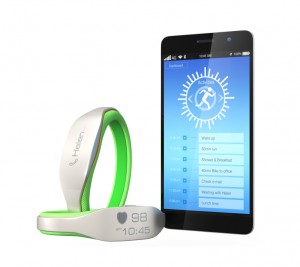Wearables: A Solution Searching For Problems?

Wearables, devices used to sense data and process it into information, are generating quite the buzz in healthcare these days. But down the line, does that buzz come with a sting?
In Wearable Tech News, Tony Rizzo reports wearable technology spending predictions of $50 billion by 2018. He also reports on a ground-breaking, glucose-sensing contact lens for diabetics that will be a “true solution for a very real medical problem that affects hundreds of millions of people.”
By 2016, wearable wireless medical device sales will reach more than 100 million devices, according to a Cisco blog on the future of mobility in healthcare. The importance of these devices is that healthcare professionals can access critical data via mobile apps before, during and after a patient’s hospitalization, thus boosting the speed and accuracy of patient care, the blog says.
In acute situations, such as a patient’s complaint of sudden heart pain or chest tightening, wearables may allow doctors to “see” patients remotely to determine the seriousness of the discomfort, said Lydia Leavett in a Forbes article on wearables.
The Age of Wearables has a few caveats, though – note that a doctor “can,” “could,” “may” or “potentially” be able to monitor a patient from a wearable, as the products are still under development. One product cites unpublished research as support, and another uses a modality, thermography, that the National Cancer Institute states has no additional benefit for breast cancer screening.

There is also an almost entertaining naivety from some writers of the complexities of wearables. Speaking of FDA approval for a smart contact lens, one writer said it would be easy because “these devices are benign, with really small embedded sensors, so their risk is nonexistent.” Really? For decades, I have watched the simple contact lens cause conjunctivitis, keratitis and corneal ulcers. And concerns abound about low-level, electro-magnetic radiation and cataract formation in the human lens. I suspect the FDA will have significant interest in smart contact lenses.
I’ve also seen the misunderstanding that physicians are eagerly awaiting and prepared for a tsunami of clinical data from their patients.
“The vision is the doctor is sitting waiting for all this, and the doctors aren’t,” said Dr. Michael Blum, Associate Vice Chancellor of Informatics at UCSF School of Medicine to PC World. “They are running around with their hair on fire trying to do what they do right now.” I agree with Dr. Blum.
The new, intense focus on wearables is the engagement of the general public, both the ill and the well, and how they collect and transmit patient information to physicians and EHRs. This presents two challenges:
- Are physicians prepared for this tidal wave of data and information? Are algorithms ready to receive, store, analyze and respond to this data? The “alarm fatigue” effect is real – and well documented. In Medical Design Technology, GlobalLogic Director of Program/Account Management Jeremy Schroetter said the solution is “… careful data analysis and algorithms in order to provide physicians with the information they need…” The remedy is to apply smart business intelligence to this data flood, but a staggering undertaking to achieve. Until then, we are quenching our thirst from a fire hose.
- What is the true cost of the data surge versus its benefits? And who will pay for it? Consider a micro-transmitter that when attached to a medication and ingested signals a wearable device, which records the ingestion date and time and coincident heart rate of the patient. A log-in summary of this information can be provided to the patient and their physician. We can quantify the cost of obtaining this information. What is the value of the information? Is compliance or noncompliance with drug therapy not already known to the patient? Is it really information if we already know it? Is the value of this product then actually as a motivator?
The cost of wearables is more than simply the cost of the device and maintenance. We need to recognize the cost the care provider incurs in receiving, storing, analyzing and responding to the information.
Helping patients understand their health information also costs money. Providing the patient access to information about themselves empowers the patient, but without providing education with it, access to information just isn’t fair.
None of this should dismiss wearables as the “pet rock” of healthcare information technology. We stand on the verge of an artificial pancreas for diabetics. We have decades of experience with insulin infusion pumps. CGM, continuous glucose monitoring, is no longer new. Although currently “under development,” the fusion of these two technologies is both achievable and hugely clinically meaningful.
Like all healthcare information technology, wearables have huge potential – married to massive challenges.